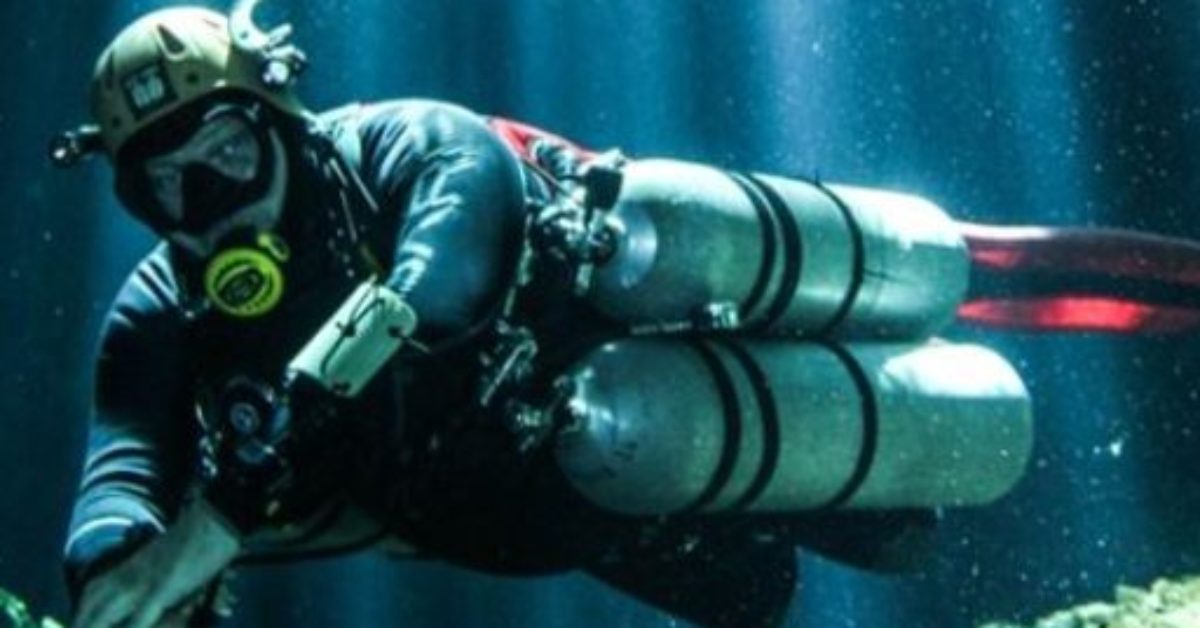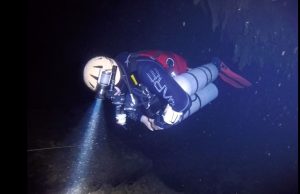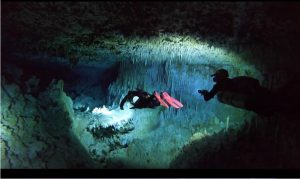Side-mount diving is a specialized form of scuba diving where divers wear their tanks on their sides rather than on their backs, allowing for greater streamlining and flexibility in tight spaces. One of the major aspects of side-mount diving is choosing between one long hose or a short hose for air supply. Both options have their advantages and disadvantages, and the decision often depends on the diver’s preference, experience level, and specific dive conditions.
The long hose configuration involves using a primary regulator with a longer hose, typically around 7 feet in length. This hose is then routed under 2 or 3 hose retainers on the cylinder side and around their neck, providing an alternate air source for themselves or a buddy in need. The primary regulator is attached to a bungee necklace for easy access and to prevent it from dangling and getting snagged on underwater obstacles.
One of the primary benefits of the long hose configuration is its simplicity and versatility. Because the hose is longer, it allows for easier sharing of air in emergencies, promoting safer buddy diving practices. Additionally, the long hose can be easily donated to a stressed diver without complex maneuvers, making it ideal for less experienced divers or those diving in challenging conditions.a very common use is in mixed teams.
However, some divers may find the long hose configuration cumbersome or uncomfortable, especially if they are not accustomed to having a hose looped around their neck. Additionally, managing the longer hose requires proper training and practice to avoid entanglement and ensure smooth deployment in emergencies.
Furthermore, the short hose configuration promotes better streamlining and reduces the risk of entanglement hazards. By keeping the hoses around the neck, divers can minimize the risk of snagging on underwater structures or vegetation, enhancing their overall safety and comfort during the dive.
On the other hand, the short hose configuration involves using a standard regulator with a shorter hose, typically around 29/30 inches in length. In this setup, the primary regulator is attached to a necklace or harness and is easily accessible for the diver. The shorter hose is usually adequate for self-contained diving but may require additional steps for sharing air with a buddy in an emergency. One can donate the cylinder.
One advantage of the short hose configuration is its simplicity and ease of use, particularly for solo divers or those who prefer a more minimalist setup. With a shorter hose, there is less risk of entanglement, and the diver can maintain better control over their equipment during the dive.
Additionally, some divers find the short hose configuration more comfortable, as there is no need to loop a long hose around the neck or under the arm. This can be particularly beneficial for divers with mobility issues or who prefer a less restrictive setup.
However, the short hose configuration may not be suitable for all diving situations, especially in environments where buddy diving is essential or where air-sharing may be required due to increased risk factors. In these cases, divers using the short hose configuration may need to rely on alternative methods for sharing gas.
In conclusion, the choice between a long or a short hose in side-mount diving ultimately depends on the diver’s preference, experience level, and the specific dive conditions. Both configurations have their advantages and disadvantages, and divers should carefully consider their options based on safety, comfort, and practicality. Ultimately, the goal is to select the configuration that best suits the diver’s needs and promotes a safe and enjoyable diving experience.


